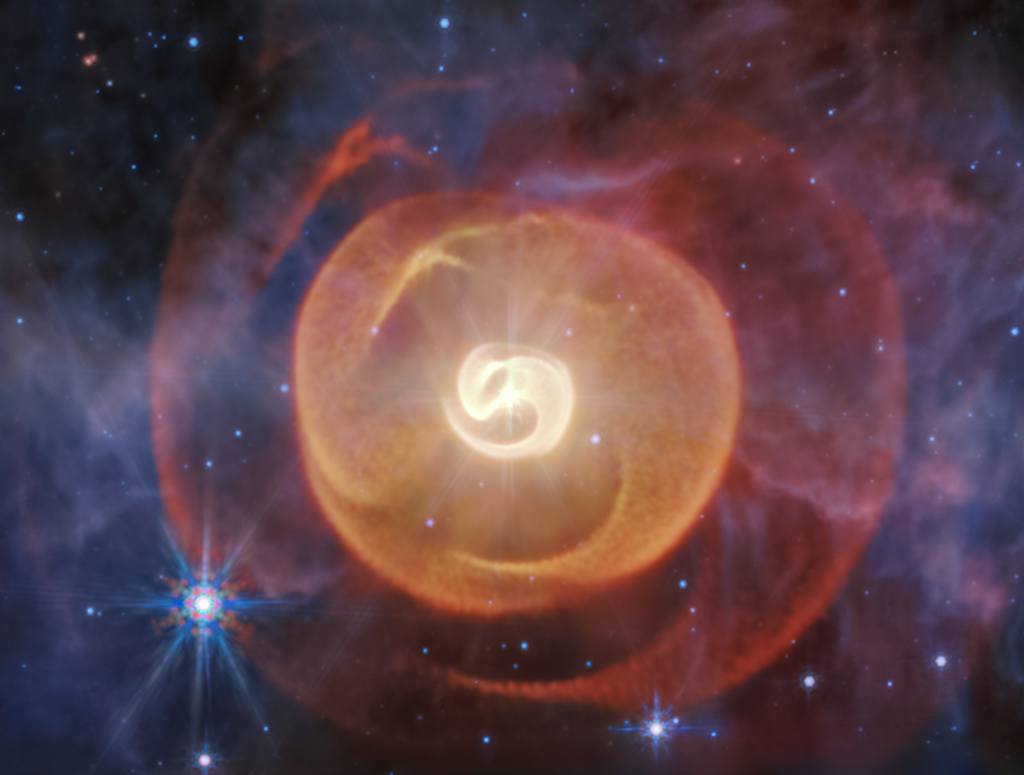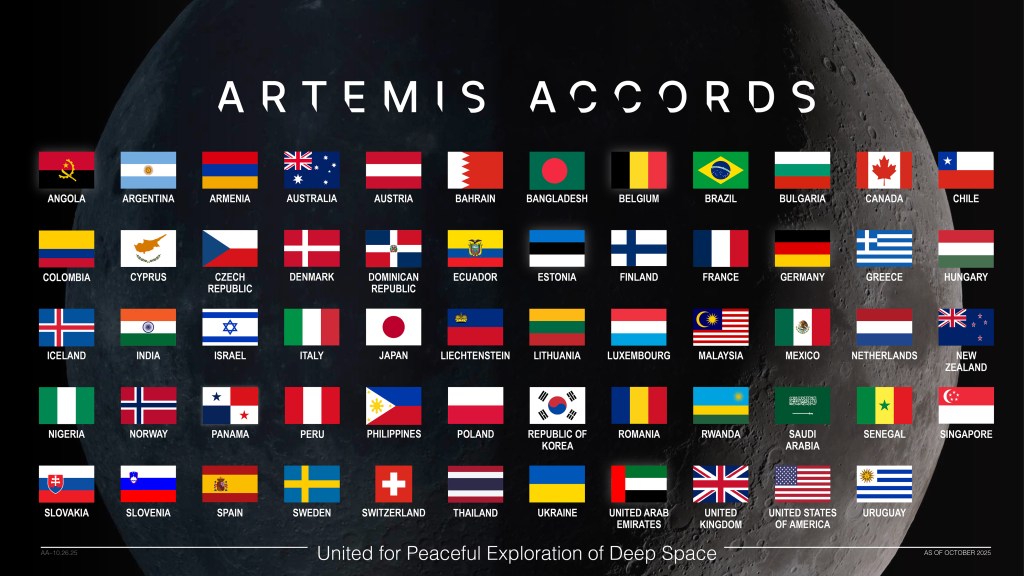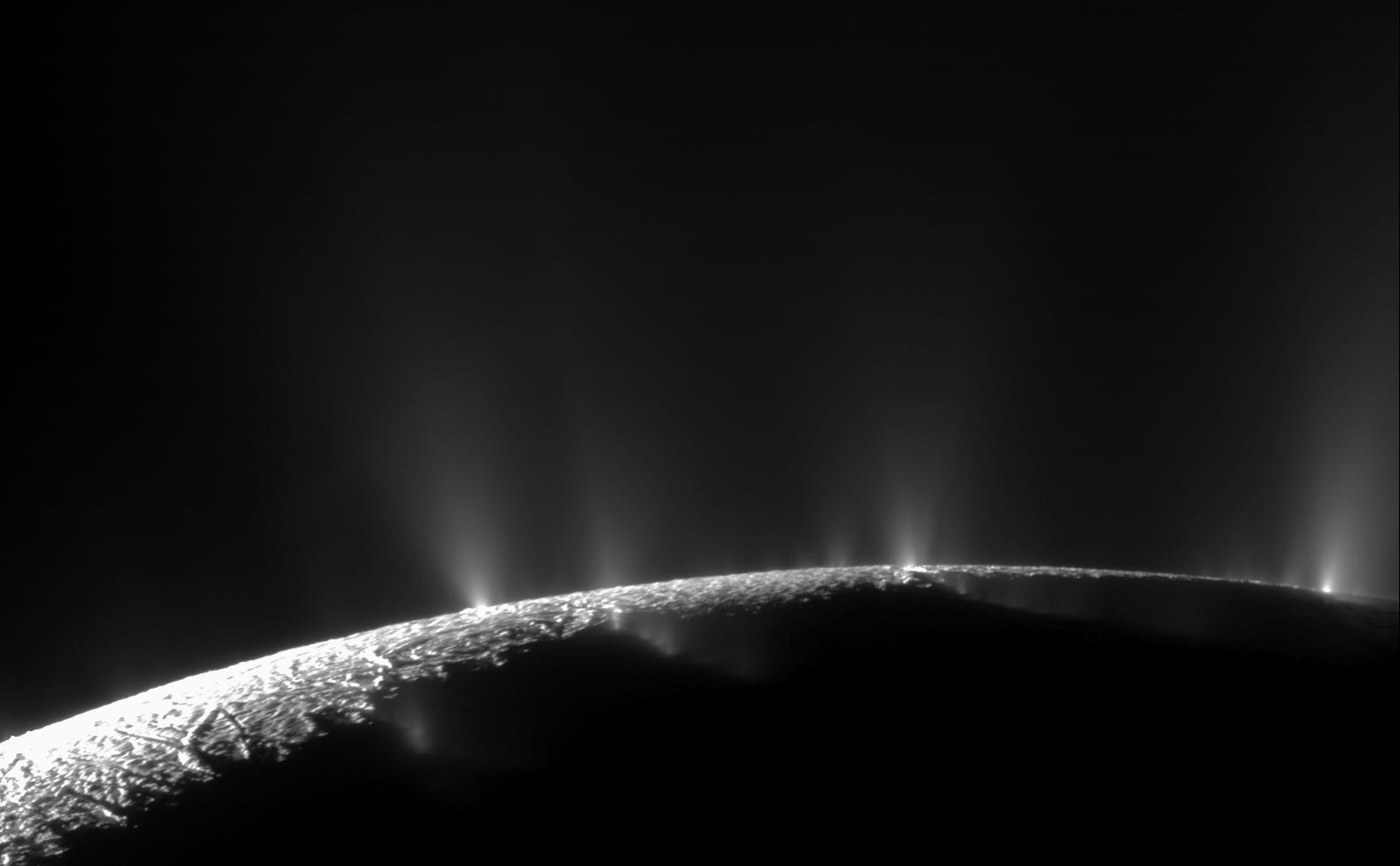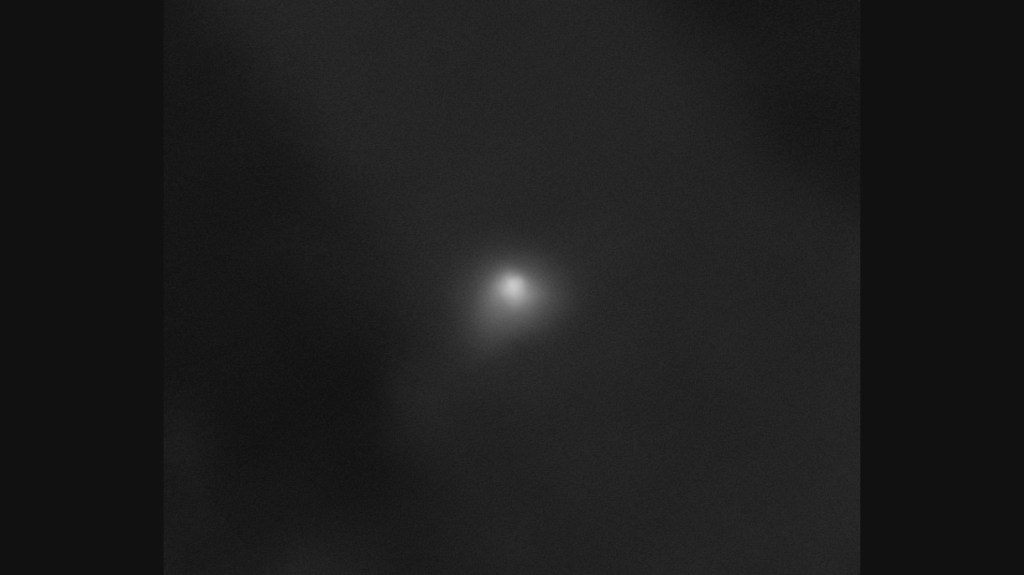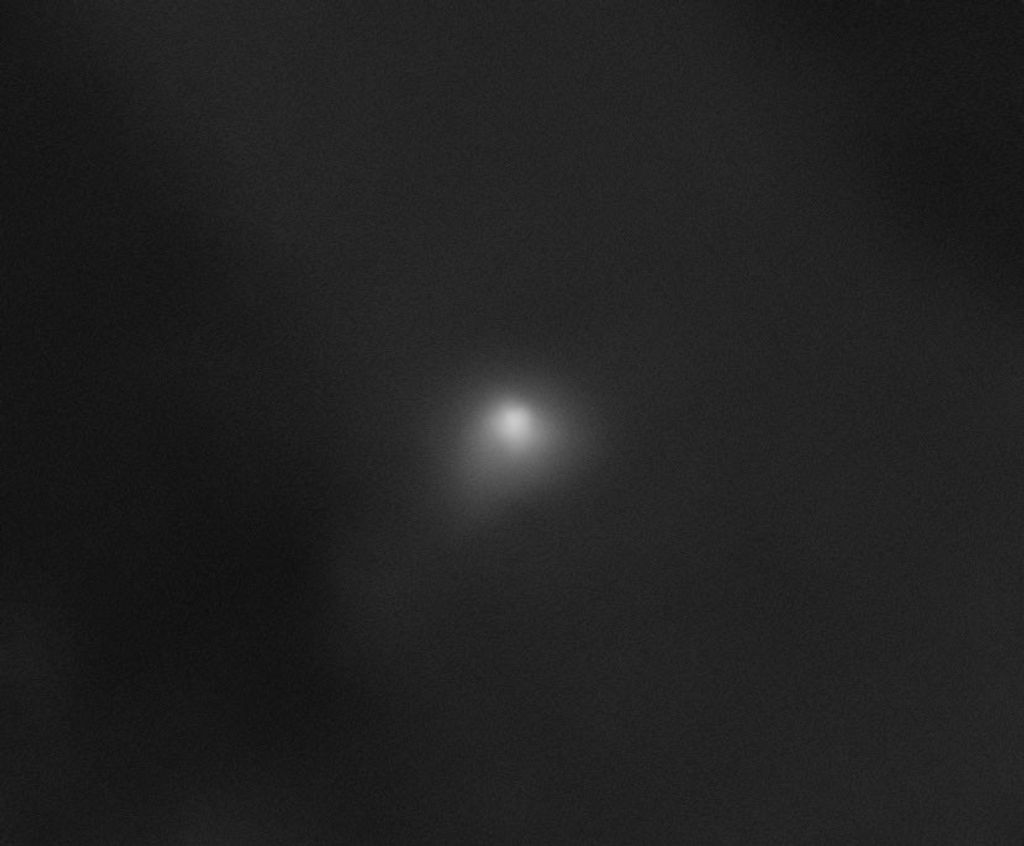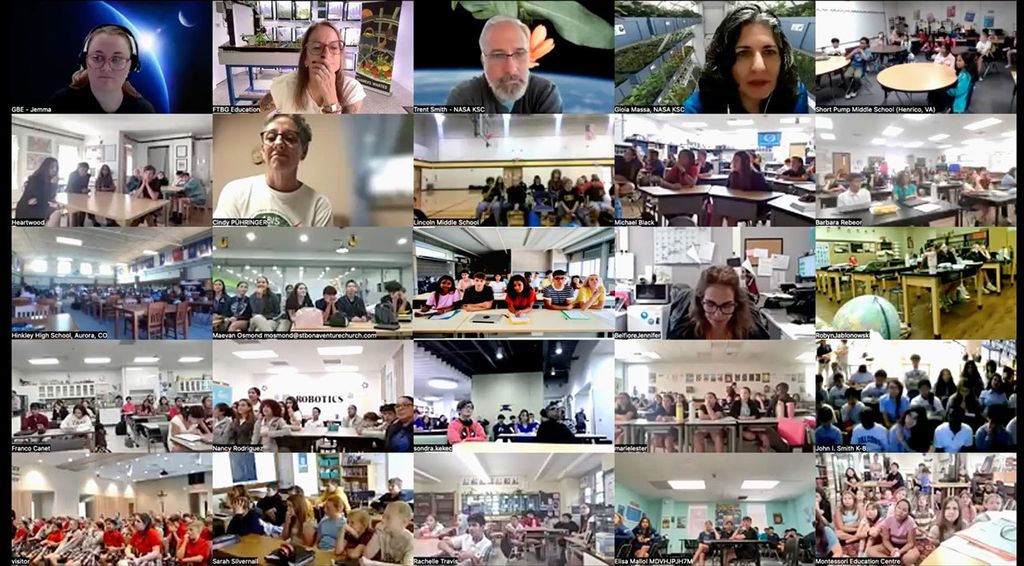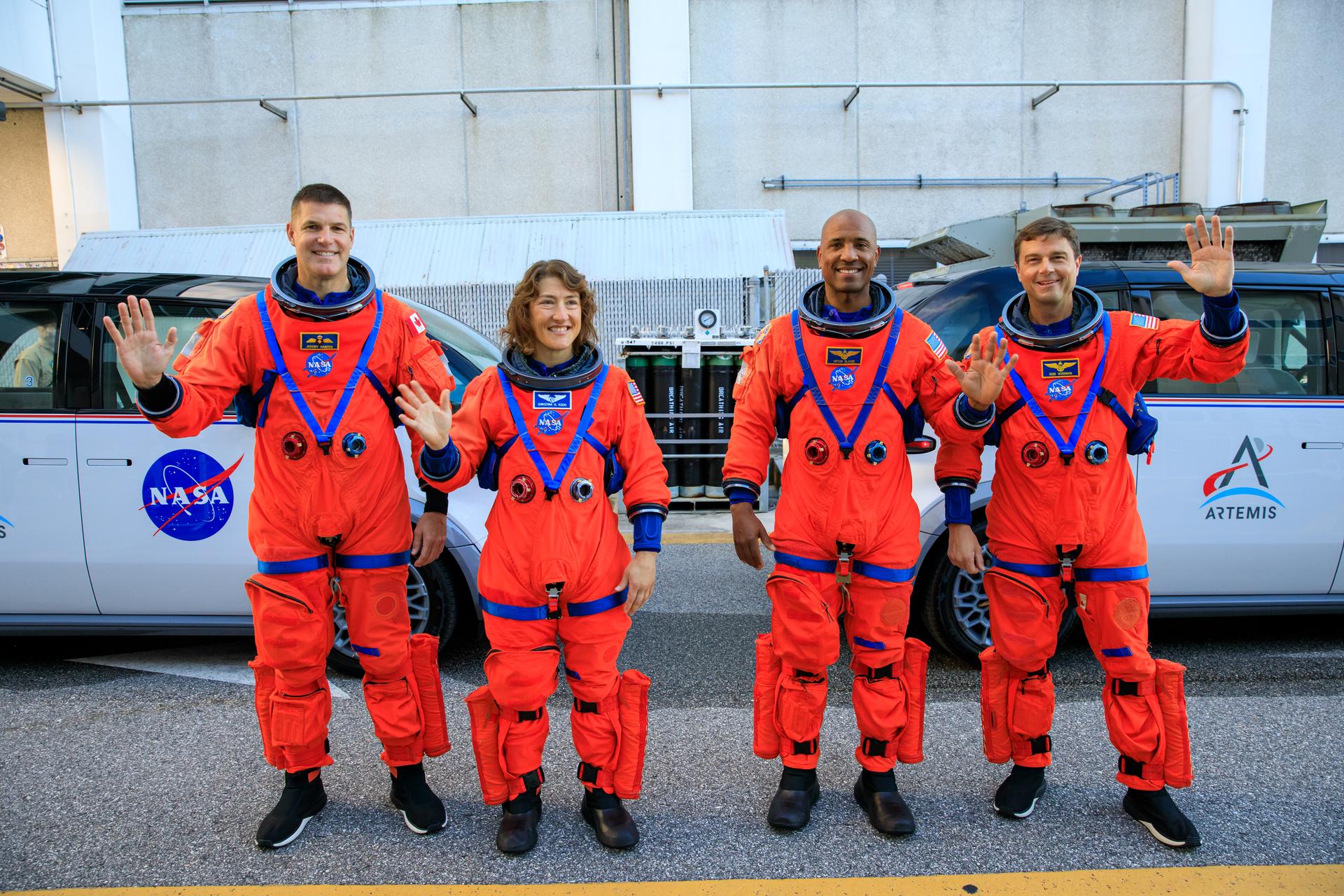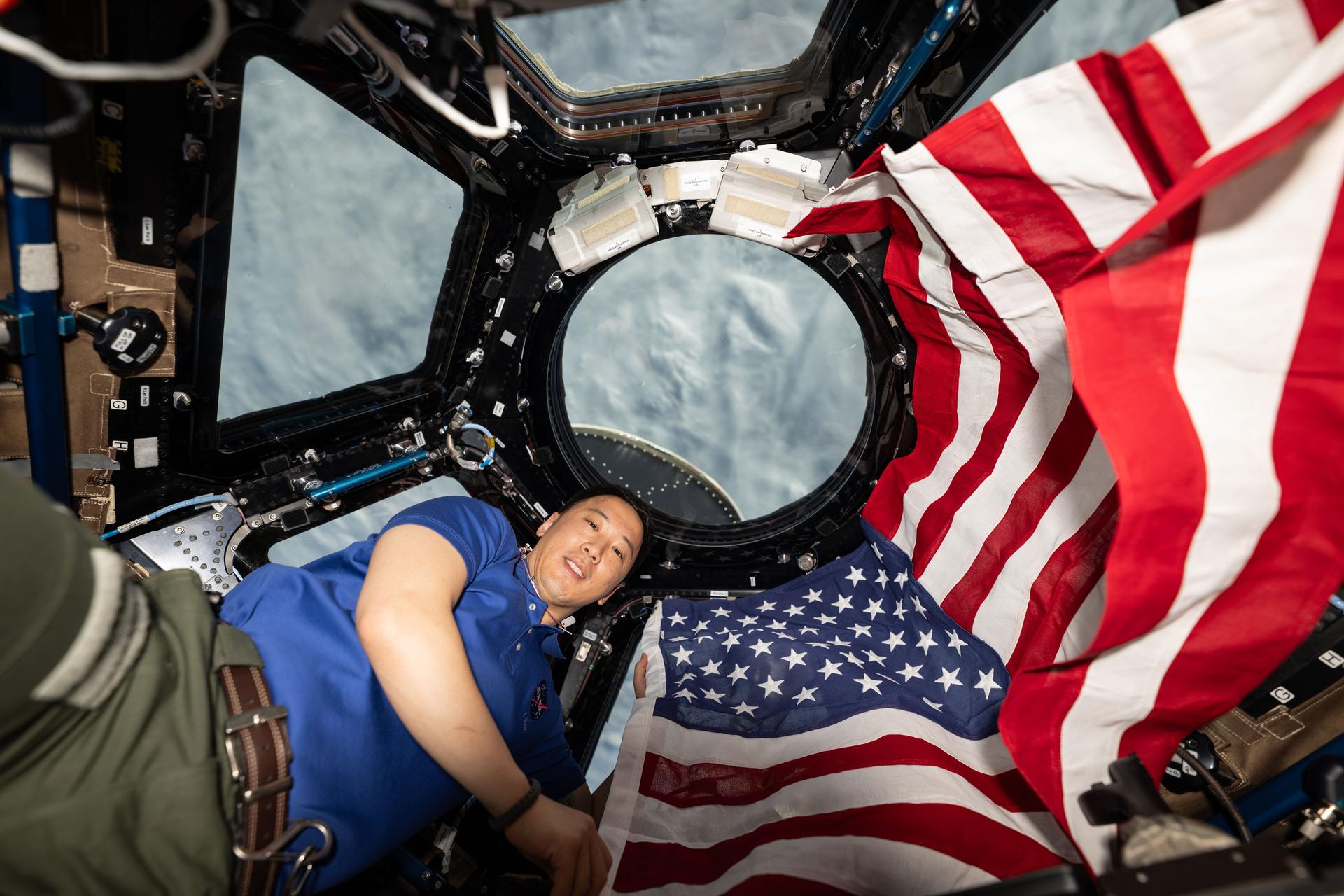1 min read
Southern Ring Nebula’s Spokes (NIRCam and MIRI Composite Image)
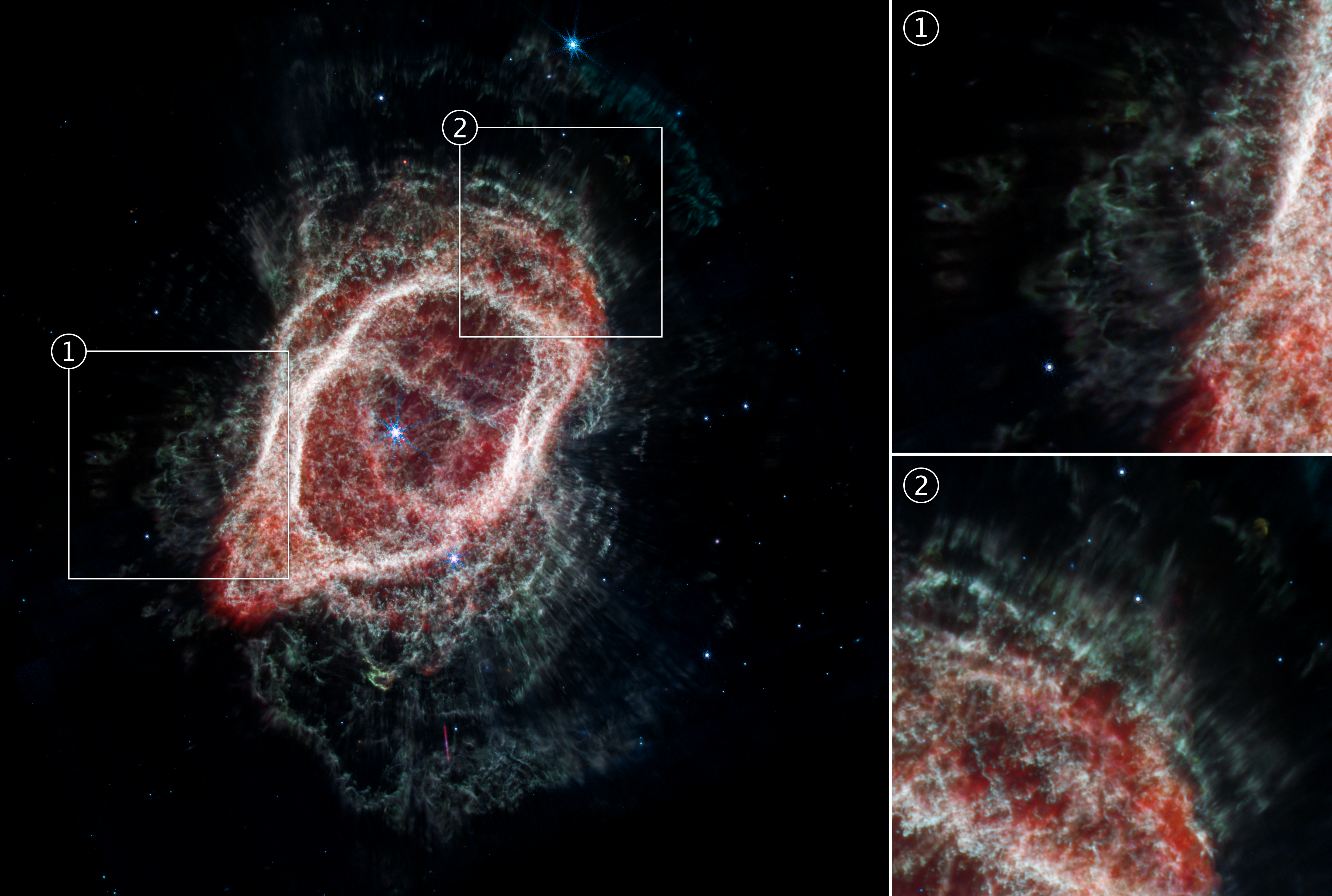
Examine the straight, brightly-lit lines that pierce through the rings of gas and dust around the edges of the Southern Ring Nebula in the Webb Space Telescope’s image. These “spokes” appear to emanate from one or both of the central stars, marking where light streams through holes in the nebula. The holes are evidence of where the dimmer star that created this scene shot out material, creating open pathways for light to flow through.
Some of the star’s ejections followed thin, straight lines (second box) through the gas and dust. Other ejections (first box) look bent, curvy, and thicker. Why? A team of researchers, led by Orsola De Marco of Macquarie University in Sydney, Australia, modeled how these complex structures might have formed. Studies of planetary nebulae have shown that even when dying stars eject their gas and dust at all angles simultaneously, the outflowing gas may not stay symmetrical for long. In the Southern Ring Nebula, the team projects that the straight lines may have been shot out hundreds of years earlier and at greater speeds than those that appear thicker and curvy. It’s possible the second set is a mix of material that slowed, creating less linear shapes.
By carefully comparing the appearance and timing of these ejections in the data and simulations, De Marco and her team propose that this is more evidence of the presence of a star with a slightly wider orbit that “stirred the pot” of ejections.
This image combines near- and mid-infrared light. The dimmer star that created the planetary nebula appears as a faint red star next to the central blue star.
About the Object
- R.A. PositionR.A. PositionRight ascension – analogous to longitude – is one component of an object's position.10:06:58.54
- Dec. PositionDec. PositionDeclination – analogous to latitude – is one component of an object's position.-40:26:00
- ConstellationConstellationOne of 88 recognized regions of the celestial sphere in which the object appears.Vela
- DistanceDistanceThe physical distance from Earth to the astronomical object. Distances within our solar system are usually measured in Astronomical Units (AU). Distances between stars are usually measured in light-years. Interstellar distances can also be measured in parsecs.2,000 light-years (590 parsecs)
- DimensionsDimensionsThe physical size of the object or the apparent angle it subtends on the sky.Image is about 2.4 arcmin across (1.4 light-years)
About the Data
- Data DescriptionData DescriptionProposal: A description of the observations, their scientific justification, and the links to the data available in the science archive.
Science Team: The astronomers who planned the observations and analyzed the data. "PI" refers to the Principal Investigator.This image was created with Webb data from proposal 2733 . It is part of Webb Early Release Observations.
The Early Release Observations and associated materials were developed, executed, and compiled by the ERO production team:
Jaclyn Barrientes, Claire Blome, Hannah Braun, Matthew Brown, Margaret Carruthers, Dan Coe, Joseph DePasquale, Nestor Espinoza, Macarena Garcia Marin, Karl Gordon, Alaina Henry, Leah Hustak, Andi James, Ann Jenkins, Anton Koekemoer, Stephanie LaMassa, David Law, Alexandra Lockwood, Amaya Moro-Martin, Susan Mullally, Alyssa Pagan, Dani Player, Klaus Pontoppidan, Charles Proffitt, Christine Pulliam, Leah Ramsay, Swara Ravindranath, Neill Reid, Massimo Robberto, Elena Sabbi, Leonardo Ubeda.
The EROs were also made possible by the foundational efforts and support from the JWST instruments, STScI planning and scheduling, Data Management teams, and Office of Public Outreach.
- InstrumentInstrumentThe science instrument used to produce the data.JWST > NIRCam and MIRI
- Exposure DatesExposure DatesThe date(s) that the telescope made its observations and the total exposure time.3 June 2022
- FiltersFiltersThe camera filters that were used in the science observations.NIRCam > F212N, F470N; MIRI > F770W
- Object NameObject NameA name or catalog number that astronomers use to identify an astronomical object.Southern Ring Nebula, NGC 3132, Eight-Burst Nebula
- Object DescriptionObject DescriptionThe type of astronomical object.Planetary Nebula
- Release DateDecember 8, 2022
- Science ReleaseNASA’s Webb Indicates Several Stars ‘Stirred Up’ Southern Ring Nebula
- CreditNASA, ESA, CSA, STScI, Orsola De Marco (Macquarie University); Image Processing: Joseph DePasquale (STScI)

These images are a composite of separate exposures acquired by the James Webb Space Telescope using the NIRCam and MIRI instruments. Several filters were used to sample narrow and broad wavelength ranges. The color results from assigning different hues (colors) to each monochromatic (grayscale) image associated with an individual filter. In this case, the assigned colors are: Red: F770W, Green: F470N, Blue: F212N

Related Images & Videos
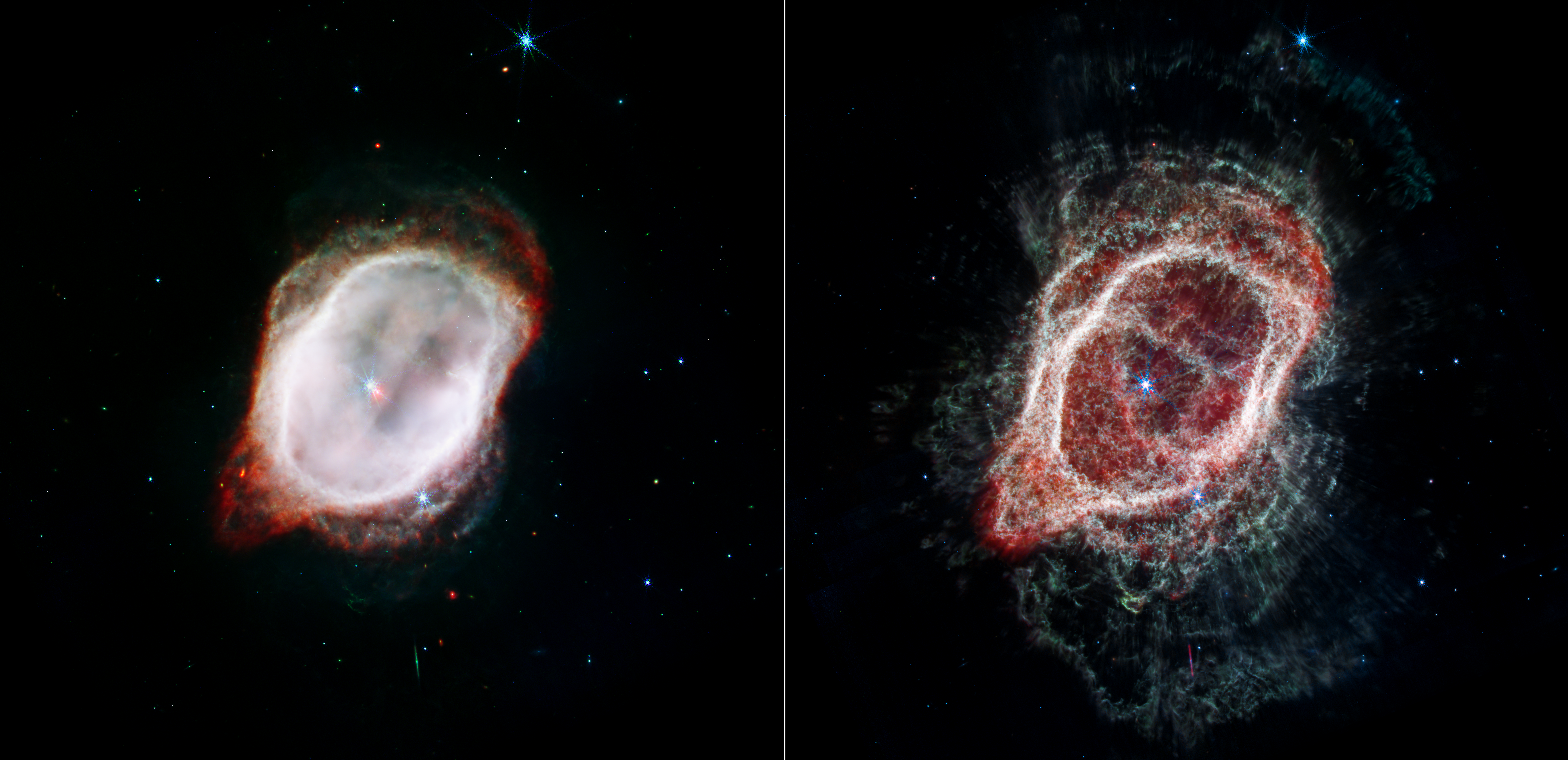
Two Views of the Gas in the Southern Ring Nebula (NIRCam and MIRI Composite Images)
The Webb Space Telescope offers dramatically different views of the same scene! Each image combines near- and mid-infrared light from three filters. At left, Webb’s image of the Southern Ring Nebula highlights the very hot gas that surrounds the central stars. This hot gas is...
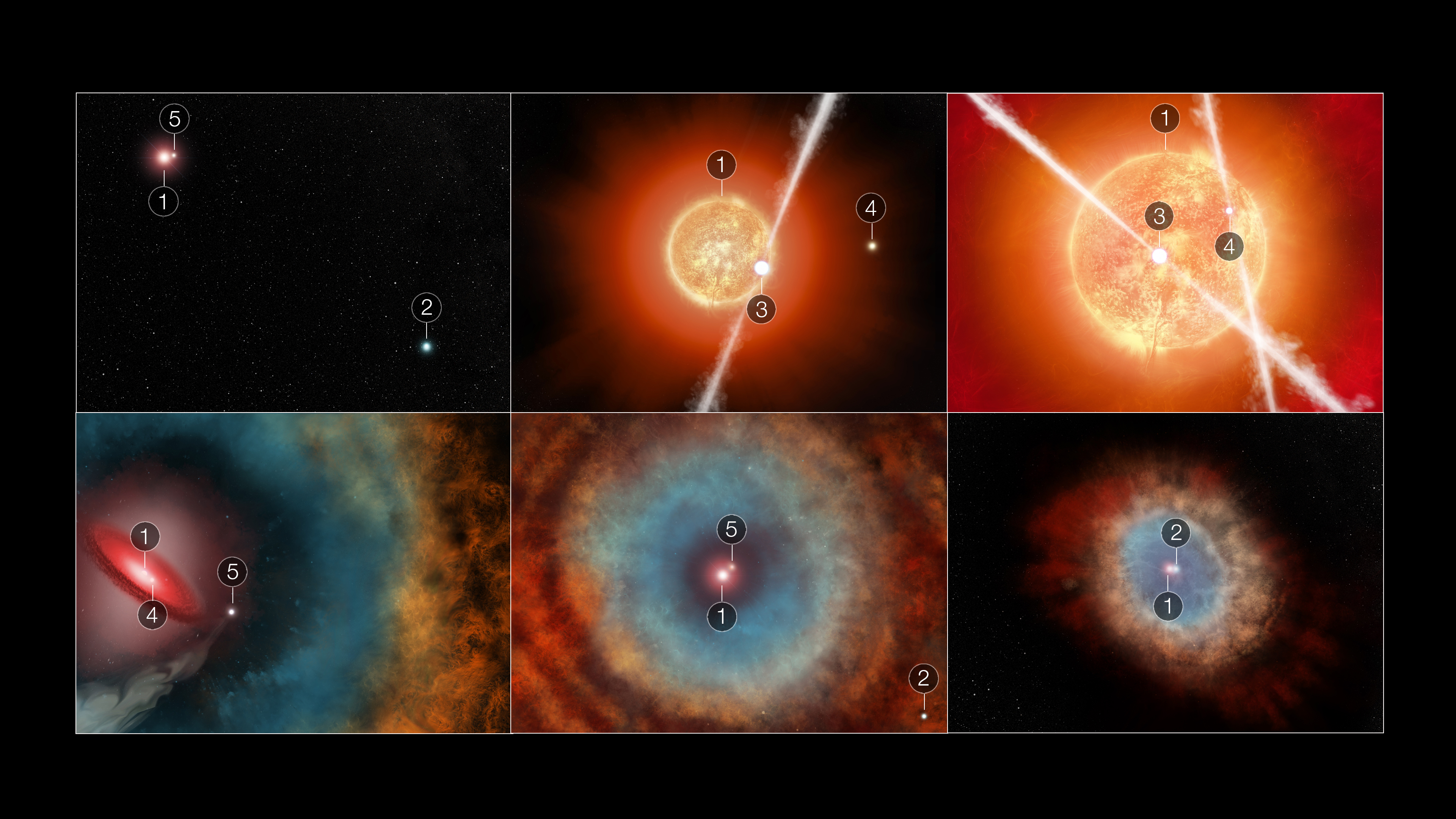
Illustration of Star Interactions in the Southern Ring Nebula
How did all the “partygoers” – up to five stars – create the Southern Ring Nebula? Let’s hit “rewind” and replay the interactions that might have created the scene! First, it’s important to know that none of these illustrations are properly scaled, and three or as many as four...
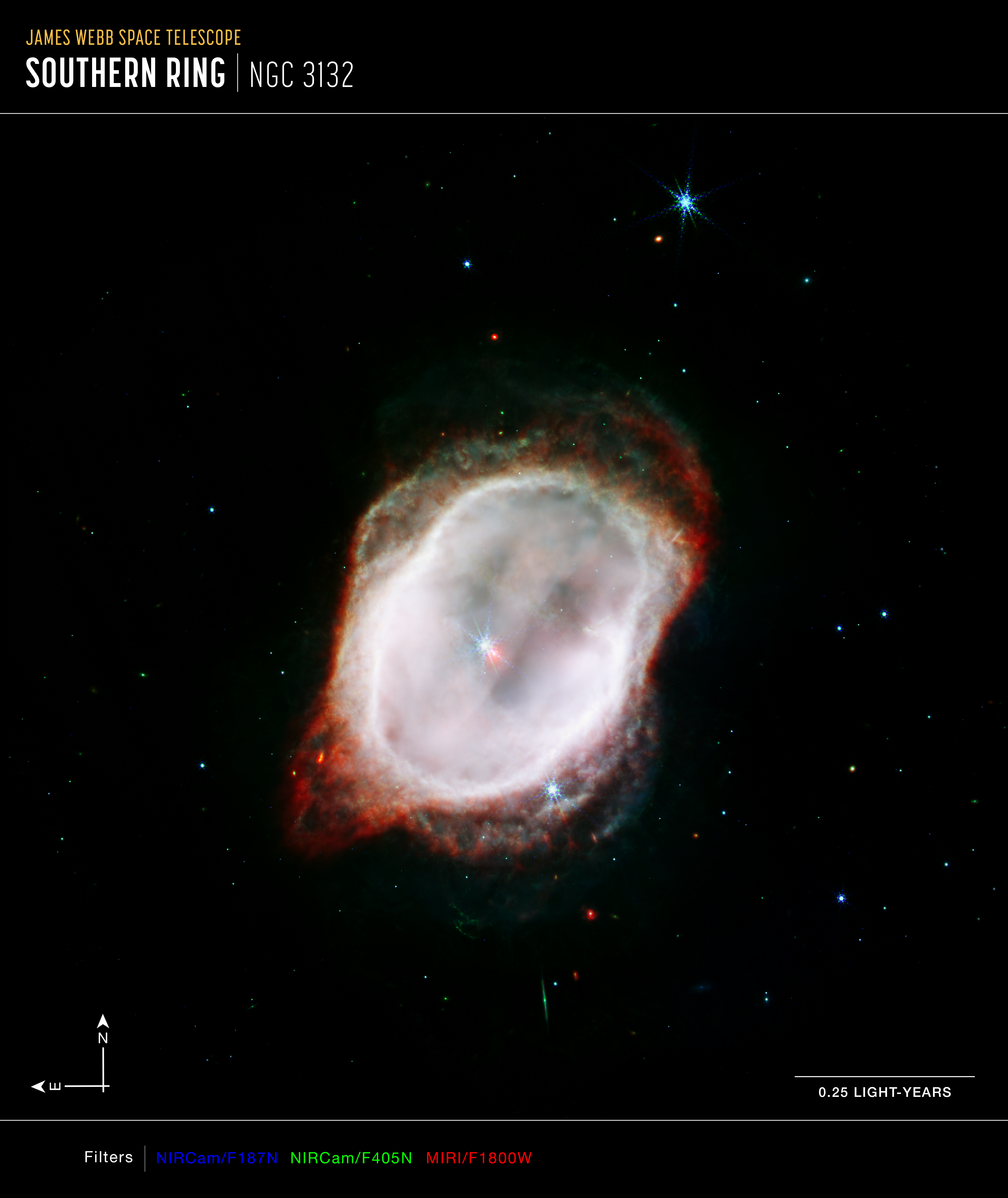
Southern Ring Nebula’s Gas (NIRCam and MIRI Composite Compass Image)
This image of the Southern Ring Nebula (NGC 3132), captured by Webb’s Near-Infrared Camera (NIRCam) and Mid-Infrared Instrument (MIRI), shows compass arrows, scale bar, and color key for reference. The north and east compass arrows show the orientation of the image on the sky....
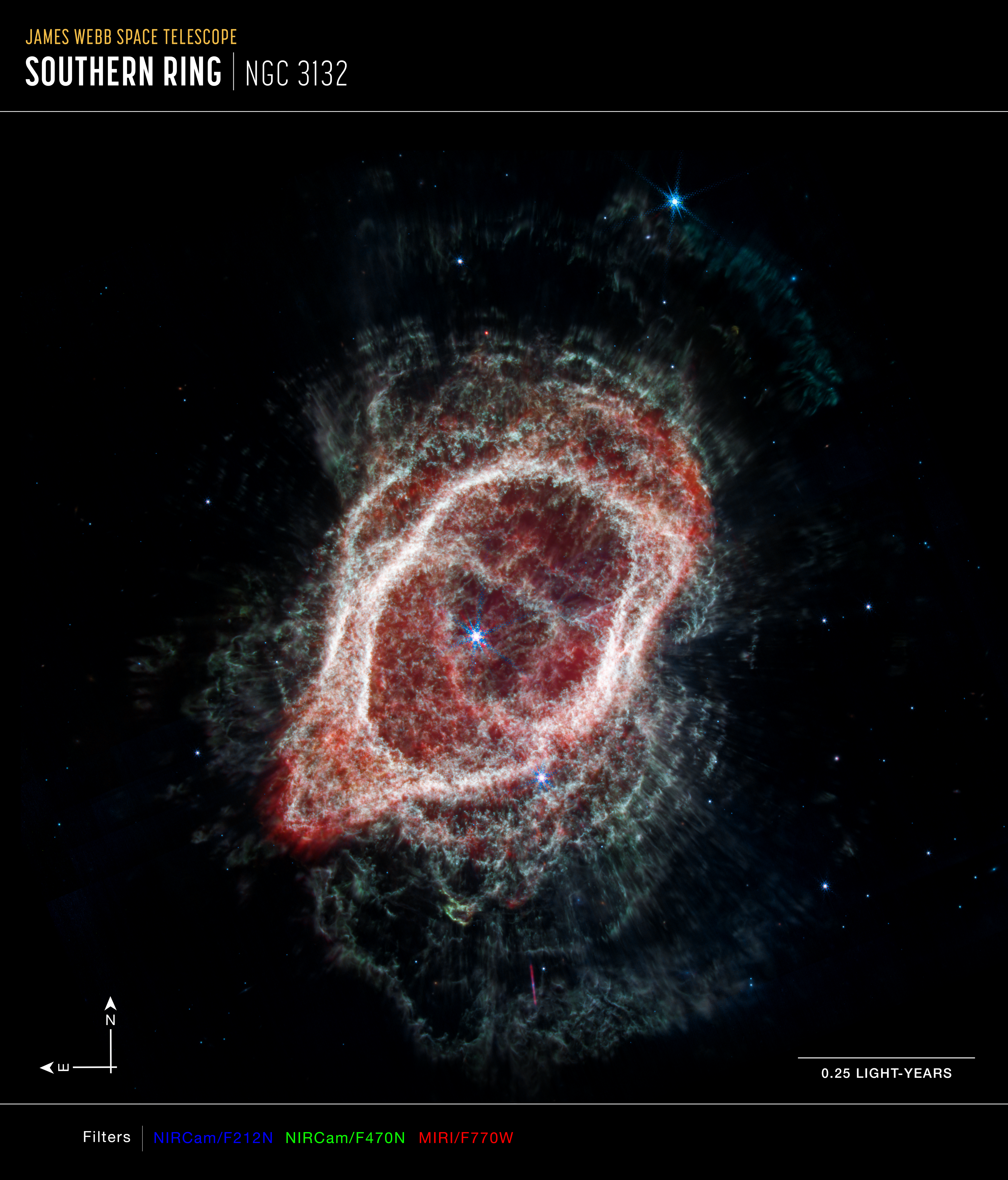
Southern Ring Nebula’s Spokes (NIRCam and MIRI Composite Compass Image)
This image of the Southern Ring Nebula (NGC 3132), captured by Webb’s Near-Infrared Camera (NIRCam) and Mid-Infrared Instrument (MIRI), shows compass arrows, scale bar, and color key for reference. The north and east compass arrows show the orientation of the image on the sky....
Share
Details
Laura Betz
NASA’s Goddard Space Flight Center
Greenbelt, Maryland
laura.e.betz@nasa.gov
NASA, ESA, CSA, STScI, Orsola De Marco (Macquarie University)
Joseph DePasquale (STScI)

